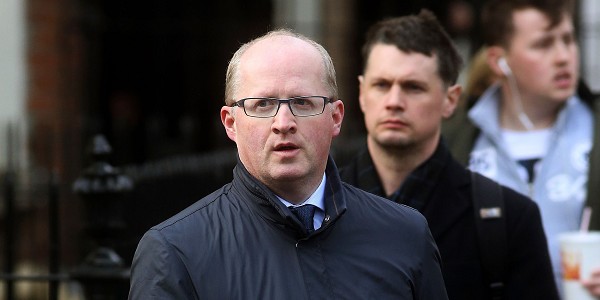Ireland’s new banking chief has vowed to shake up the mortgage market to make it easier for homeowners to switch lenders.
Central Bank governor Philip Lane claimed he was powerless to directly intervene where banks controversially charge existing customers higher rates than new borrowers.
But he pledged to work on an overhaul of the “unfair” system which would make switching lenders as easy as changing mobile phone operator.
“I agree there is not much switching going on,” he said.
“But the bank’s own research indicates there is more than you might think, where households could benefit from switching.
“One of our goals is to make that switching process easier.”
There are around 300,000 homeowners in Ireland on standard variable rate mortgages.
They are being forced to pay around double the interest of similar home loans across Europe.
The higher rate heaps several thousand euro more onto annual repayments compared to the EU average.
At the same time, banks are offering new customers here cheaper repayment rates that are being refused to existing customers.
Fianna Fail’s finance spokesman Michael McGrath said tens of thousands of borrowers locked into variable rates as high as 5% are “trapped” because they are in negative equity or do not qualify for switcher loans.
“We don’t have an active switcher market,” he said.
“It is fundamentally unfair that existing customers don’t get what new customers are offered.”
Mr McGrath said homeowners could save hundreds of euro every month if allowed to move onto the lower interest rates.
Speaking at the Oireachtas Finance Committee, he told Mr Lane it is a “clear case of discrimination against existing customers” and “unjustifiable” for banks to charge Irish customers several times over record low interest rates.
Mr Lane, who took over as head of the Central Bank before Christmas, said he could not interfere with contracts between banks and borrowers.
But referring to how easy it is to switch mobile phone contracts, he indicated the bank was working on a similar system for mortgage customers.
“I fully understand the perception that it is unfair, if you’ve been in that situation,” he said.
“That is something the bank can work on, making the switching process easier.”
Separately, the Central Bank declared the recovery in the Irish economy is now “convincing”.
In its latest quarterly bulletin, the bank also warned the government not to squander a chance offered by the upswing to fix problems left over from the financial crash.
Latest figures show the value of the economy grew by just under 7% last year as people are increasingly spending their money and jobs are being created at rate of around 45,000 a year.
The Central Bank said this rising consumption and employment growth “confirm that a convincing recovery is well established”.
Chief Economist Gabriel Fagan said the growth should continue without any major problems over the next two years, but warned action must be taken to prevent another boom-bust calamity.
“More importantly, the strong growth outlook provides an opportunity to tackle the remaining legacies of the crisis and minimise future risks to economic, fiscal and financial stability,” he said.
“This opportunity needs to be taken. Reducing the remaining vulnerabilities and strengthening economic resilience are necessary to mitigate the risk of future boom-bust cycles and ensure stable and sustainable medium-term growth.”
The Central Bank said rising wages and low inflation was putting more money in people’s pockets. This was boosting consumer confidence with spending last year growing at its fastest rate since the peak of the boom in 2007.
